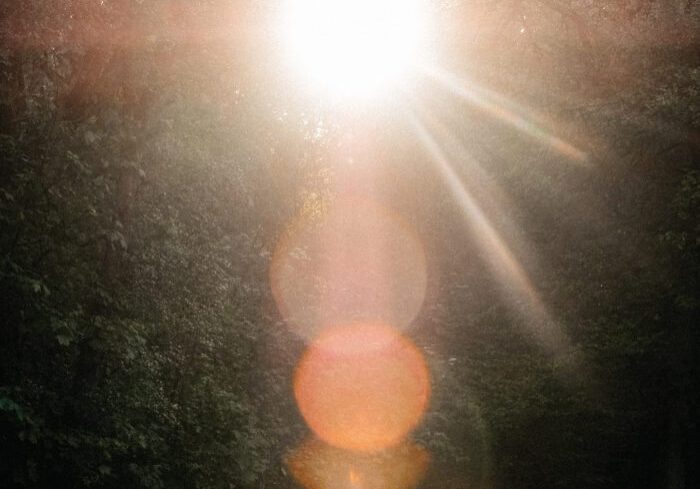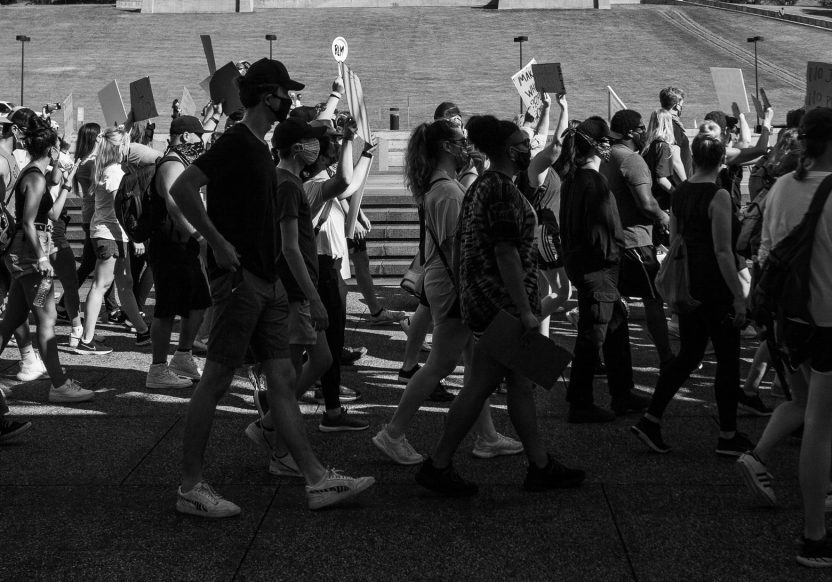Relational Holism
Q: “As a member of a Contemplative meditation and education group in our city which includes nuns, parish members and non active members in the rituals of the Church we would like to bring a more comprehensive technologically enabled approach to connecting our members to the Delios, Rohrs, Freemans, Chittisters, Keatings etc of our world to enable individuals to follow their path and connect in small groups (as opposed to just being part of the World Christian Meditation Group.) Perhaps this a mirror, but it appears to a number of us that the respective organisations of our living modern day mystics have certain ‘walls’ around them and in some cases a ‘I’ve figured it out and follow-me’ type of approach which is a form of control we are trying to transform in our organisational structures. My questions: why is this this and does this idea have any merit?”
 Ilia: Medieval writers had a great sense of the cosmic whole. Since God is One and all things in heaven and earth are created by God, heaven and earth must be One as well. Everything in the larger world, the universe, is contained in the smaller world, the human, and everything in the smaller world, the human, is in the larger world, the universe. Thomas Aquinas had a deep sense of the whole as the interrelated order of creation. The good of the whole creation is like a stain glass window of many colors, he claimed, because the good that is lacking in one creature is made up by the good of another. Bonaventure also spoke of the Body of Christ like a cosmic stain glass window, a coincidence of opposites in which the distinction of one entity mutually affirms another, since what is not found in one thing is found in other.
Ilia: Medieval writers had a great sense of the cosmic whole. Since God is One and all things in heaven and earth are created by God, heaven and earth must be One as well. Everything in the larger world, the universe, is contained in the smaller world, the human, and everything in the smaller world, the human, is in the larger world, the universe. Thomas Aquinas had a deep sense of the whole as the interrelated order of creation. The good of the whole creation is like a stain glass window of many colors, he claimed, because the good that is lacking in one creature is made up by the good of another. Bonaventure also spoke of the Body of Christ like a cosmic stain glass window, a coincidence of opposites in which the distinction of one entity mutually affirms another, since what is not found in one thing is found in other.
These medieval insights are not far from what modern science is telling us today about physical reality as relational holism. There is a mutual complementarity in nature, a holism, that baffles scientists. The German philosopher Immanuel Kant said that the whole is an integrative relational structure in which there is a constant interplay of parts. While the whole provides a certain stability, it is not a fixed form but a dynamic pattern that changes constantly. Since the whole is refigured as parts change, whole and part are codependent and coevolve.[i]
Quantum physics is widely seen today as exhibiting some sort of holism. At the beginning of the twentieth century, scientists such as David Bohm and Karl Pribam speculated on wholeness in nature and developed elaborate theories to explain wholeness as a function of consciousness. Physicist and philosopher Carl Friedrich von Weizsäcker said that taking quantum mechanics seriously predicts a unique, single quantum reality underlying the multiverse. In our everyday existence, it is difficult to see how we can be part of a reality that is an indivisible wholeness, without parts and divisions; the only way we can understand this is to acknowledge the presence of consciousness in the universe as an intrinsic aspect of all things in space and time. The consciousness that permeates nature is the same flow of activity that each of us inherits in a unique way. In and through our minds we are part of an undivided whole that is our home, the cosmos.
Arthur Koestler proposed the word holon to describe the hybrid nature of sub-wholes and parts within in vivo systems. A holon is something that is simultaneously a whole and part.[ii] From this perspective, holons exist simultaneously as self-contained wholes in relation to their sub-ordinate parts, and dependent parts when considered from the inverse direction. Koestler defines a holarchy as a hierarchy of self-regulating holons that functions first as autonomous wholes in supra-ordination to their parts, secondly as dependent parts in sub-ordination to controls on higher levels, and thirdly in coordination with their local environment.
Cosmic holism leads me to think of nature as a “seamless garment” of life in which mind, matter and nature’s ability to change, its plasticity, are integral to life. Nature is an interlocking network of systems, an “unbearable wholeness of beings” as Steven Talbott writes.[iii] Nature is more flow than fixed. “The body,” Talbott states, “is a formed stream.”[iv] Structures once stably formed, do not necessarily stay that way. Many of the body’s structures are more like standing waves than once-and-for all constructed objects. Organisms show a meaningful coordination of activities whereby a functioning and self-sustaining unity engages in flexible responses to the myriad stimuli of the environment. Nature is a choreographed ballet, a symphony, whereby every organism is dynamically engaged in its own self-organization, pursuing its own ends amid an ever-shifting context of relationships. Such self-organization is not a closed system or shut off from surrounding influences but just the opposite. Self-organization is maintained by openness to the environment, to spontaneity and to new patterns of order.
We humans are part of a cosmic relational whole, nature’s interlocking wholeness of intricate systems. In fact, if we understand what science is telling us, we are more “holon” than individual. We humans have the ability to know this wholeness in such a way that we can reflect on it and act toward it. We act according to the Whole when we have a consciousness of belonging to an interrelated whole. We stifle or crush the whole when we are unconscious of it or refuse to acknowledge our reality of wholeness. Albert Einstein was something of a mystic who had profound insight on nature’s wholeness as he wrote in one of his letters:
A human being is a part of the whole called by us universe, a part limited in time and space. He experiences himself, his thoughts and feeling as something separated from the rest, a kind of optical delusion of his consciousness. This delusion is a kind of prison for us, restricting us to our personal desires and to affection for a few persons nearest to us. Our task must be to free ourselves from this prison by widening our circle of compassion to embrace all living creatures and the whole of nature in its beauty.[v]
The path to relational holism is the mystical path to Oneness or Unity, which is why the mystical traditions are so essential today. There is no one way to the Whole; rather there are infinite ways to wholeness. Different teachings on how to travel from isolation to wholeness can be found across traditions. We have mystical teachers of the East such as Rumi and Mansur al Hallaj and mystical teachers of the West such Thomas Keating and Cynthia Bourgeault. While their teachings may differ, their insights are like a stain glass window of complementary opposites. Each teaching in a sense makes up in one what is lacking in the other, so that the brilliance of the whole can only truly be seen through interspiritual unity.
Mystical teachings can never be systems of power over and against one other. If a mystical teacher seems defensive of his or her position or self-enclosed in one’s doctrine it may be because she or he has been deeply grasped by the power of the One or God. A person who has had a profound experience of God will speak from a deep center of knowledge, a center of passion, where the heart sees more deeply than what the tongue can tell. Finding the words to express the ineffable experience of God is a constant struggle because no language can adequately describe the experience of Oneness in love.
Teilhard de Chardin had a genuine commitment to the living whole, the vitality of God embedded in the dynamic structures of evolution. Because of this absolute oneness he was confident that the universe has a future, an anticipation of flourishing life in a unity of love. The whole universe is in formation, Teilhard said, developing as one cosmic Person, which Raimon Panikkar expressed as the cosmotheandric experience.
Perhaps the fear of what seems like competitive teachings could be allayed by a conversation together, something like the World Parliament of Religions. Those who come together in the name of Oneness or love and genuinely seek unity together as complementary opposites, often leave the gathering as a new whole body of being-in-love. For the body is truly one; although we are many parts we are all parts of the whole.
Notes
[i] Mark Taylor, After God (University of Chicago), 315 – 316.
[ii] For a discussion of holons see Cannato, Radical Amazement, 94 -102; Judy Cannato, Fields of Compassion: How the New Cosmology is Transforming Spiritual Life (Notre Dame, IN: Sorin Books, 2010);Ken Wilbur, A Theory of Everything (Boston: Shambhala Publications, 2000).
[iii] Steve Talbott, “The Unbearable Wholeness of Beings,” The New Atlantis: A Journal of Technology and Society. https://www.thenewatlantis.com/publications/the-unbearable-wholeness-of-beings.
[iv] Talbott, “The Unbearable Wholeness of Beings.”
[v] Walter Sullivan, “The Einstein Papers: A Man of Many Parts,” New York Times Archives, March 29, 1972. https://www.nytimes.com/1972/03/29/archives/the-einstein-papers-a-man-of-many-parts-the-einstein-papers-man-of.html. Sullivan writes: “One of the most poignant exchanges in his role as a philosopher came when he was 70 and living in Princeton. An ordained rabbi had written explaining that he had sought in vain to comfort his 19‐year‐old daughter over the death of her sister, “a sinless, beautiful, 16‐year‐old child.”
 View print-friendly version
View print-friendly version
5 Comments
Related Posts

A Whiteheadian Response: The God of Persuasion
Question: “Please help me to further understand, I thought that God did not direct our lives. We made choices, those choices CREATED—God’s presence is in the creation of the choice…


I’d like to suggest and encourage the practice of dialogue as developed and described by David Bohm and others (Otto Scharmer, William Isaacs, Peter Garrett…) as a complementary practice to meditation and contemplation. Dialogic practice tends to lead participants, over time, to an experience of self-as-community and a dying to the false self. There also tends to be a development of synchronicity as the practice of the group deepens.
There is a video of a conversation between Laurence Freeman & Thomas Keating that might be useful. I found it beautiful. It was shown by Contemplative Outreach at a United in Prayer day around 2010.
‘I see all. I see my people from generation to generation forming a stream of light, an avenue of love, a pathway of knowledge, to my Father’s heart. I see you, my child, living and growing in this light, this love, this pathway. Turn to those who travel with you on either side. Call to those who have gone ahead, encourage those who are behind you.’
Thank you for this formed stream of stained glass illumination!
Ultimate Reality, which most call God, is the holy One in All and All in the wholly One. Our attachment to our outer self, and its interaction with the external world, blinds us to the serenity of experiencing our inner self flowing within the universal whole.